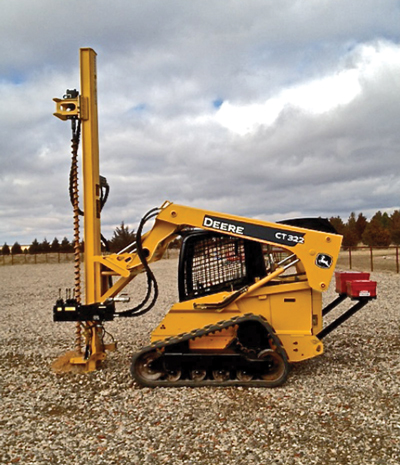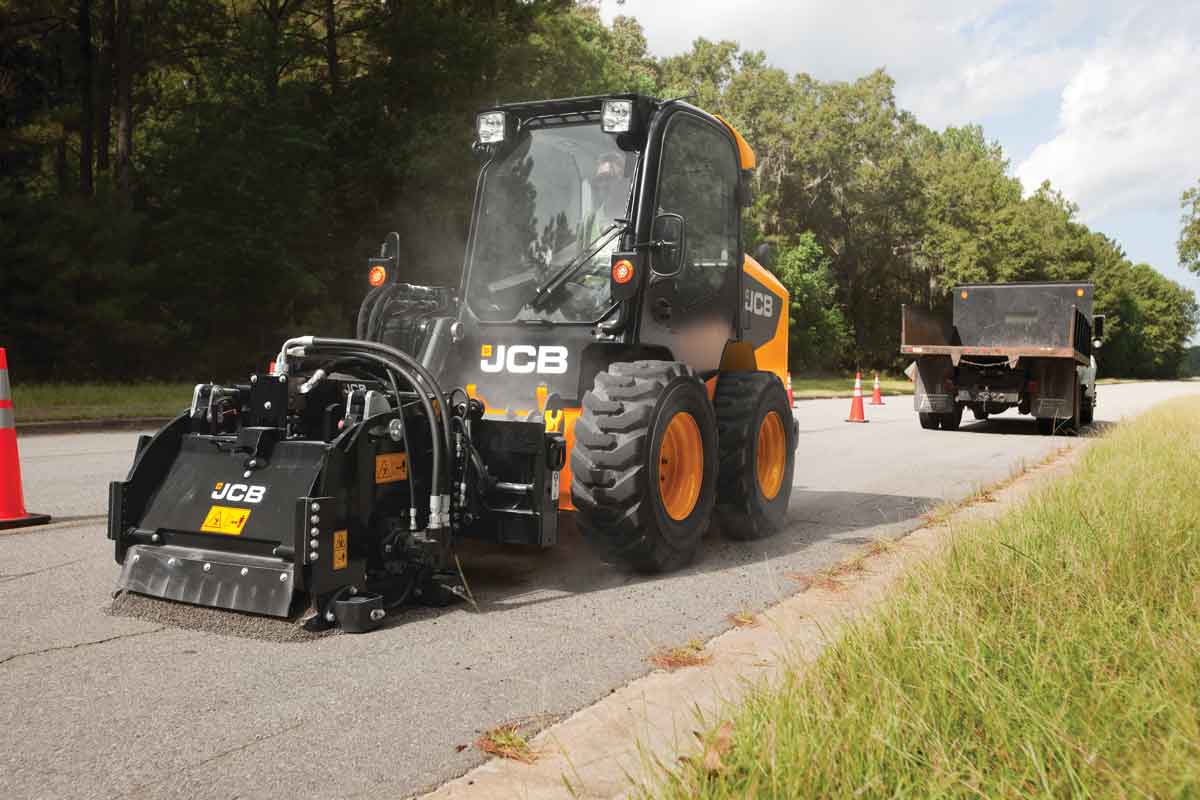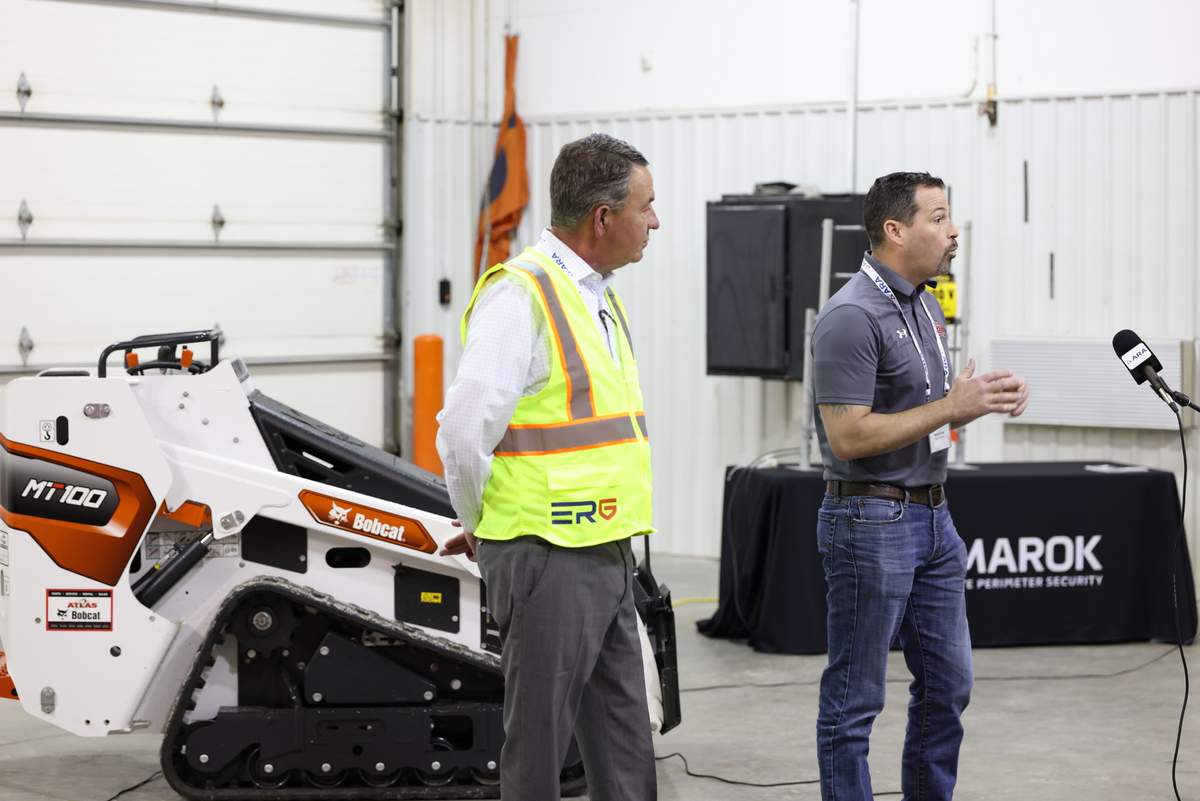Cost-Effective Drilling Mast Attachments
Compact equipment is a vital component for the installation of horizontal geothermal systems. A backhoe, trencher or excavator is required to dig a 4- to 6-ft deep trench anywhere from 100 ft to several hundred feet in length, into which the HDPE (High Density Polyethylene) pipe is laid; for a more detailed description see “Ground Loop Systems Explored” online. Vertical loops on the other hand are ideal for urban and restricted access sites, retro-fits and even inner city buildings. The installation is less intrusive, with less site impact and with the right drilling method and tooling the installer is not limited by unfavorable ground conditions, as is sometimes the case with horizontal layouts.
 Many installers of horizontal systems see the advantages of vertical geothermal loops and often encounter sites where a horizontal design is not an option. Instead of subcontracting out the drilling or having to turn down vertical projects all together, they would like the option of being able to drill the bore holes in-house. Additionally, many excavating, landscaping and HVAC professionals are also expanding operations into vertical geothermal installations. They often own and operate compact equipment such as skid steers, mini excavators and wheel loaders. The challenge to both groups is that getting professional grade drilling equipment can seem like a big investment.
Many installers of horizontal systems see the advantages of vertical geothermal loops and often encounter sites where a horizontal design is not an option. Instead of subcontracting out the drilling or having to turn down vertical projects all together, they would like the option of being able to drill the bore holes in-house. Additionally, many excavating, landscaping and HVAC professionals are also expanding operations into vertical geothermal installations. They often own and operate compact equipment such as skid steers, mini excavators and wheel loaders. The challenge to both groups is that getting professional grade drilling equipment can seem like a big investment.
A cost-effective solution for both groups to enter the vertical geothermal installation market is a drilling mast attachment. As the mast attachment is powered by the diesel engine on the skid steer, excavator or carrier machine, capital costs are reduced substantially when compared to a dedicated geothermal drill. Just how cost-effective is it? If drilling rates are in the range of $15-20 per foot, and the residential geothermal projects require 400-600 ft of vertical loop, a mast attachment can pay for itself in as little as four jobs.
Drill masts have long been used for geotechnical, environmental and foundation applications. Quick-attach mechanisms mounted between the mast and the carrier machine ensure simple attachment and easily couple to the machine’s auxiliary hydraulics. Therefore, changing between bucket and drill mast is quick and easy.
For example, RigKits K1 mast uses a simple interface — a two-hose connection to the auxiliary power supply of your skid steer or excavator that requires 20 to 40 gpm of hydraulic flow at 3,000 psi. Drill depths of 200 ft at 4- to 6-in. diameters can be reached. The mast’s hydraulic system is designed with two hydraulic circuits. One circuit is for the rotation head to receive maximum hydraulic flow and pressure. The second is for all other functions such as down feed and side-to-side movement controls. A flow splitter can be used if the excavator can only provide one line of pressure. Larger mast units such as the K2 and K3 provide even more powerful specs for deeper holes up to 600 ft and larger diameter bores.
As with any piece of machinery, regular maintenance will keep the mast unit running longer and more efficiently. Daily maintenance goes a long way, visually inspecting hydraulic hoses for damage or leaks, greasing attachment pins and checking hardware for tightness as well as necessary inspection and maintenance of the carrier machine’s engine and hydraulic system will keep things running smoothly. To help keep the rotation head and other hydraulic components off the ground, out of the dirt and running clean, the mast is conveniently stored and transported horizontally on T-legs which are removed once the mast has been attached to the carrier unit.
The modular design of RigKits units allows for many customizable options from high-speed drill heads to clamps to added accessories like remote controls. Especially appealing is the option of upgrading to a dedicated rig down the road as the number of projects requiring vertical installation continues to grow. This can be very cost-effective as the drill mast including the rotation head — the business end of the rig — is already owned. It can easily be coupled to a complete rig including frame, tracks, engine and other accessories.
With various rotary torque and speed combinations and setups for auger, mud and air drilling, the attachments are compatible with all drilling methods. With the selection of the right mast attachment, various types of compact equipment can be transformed into powerful and versatile drilling machines that can take on many geothermal projects.
Brandon Wronski is an equipment specialist with RigKits LLC, based in Charlotte, N.C.





